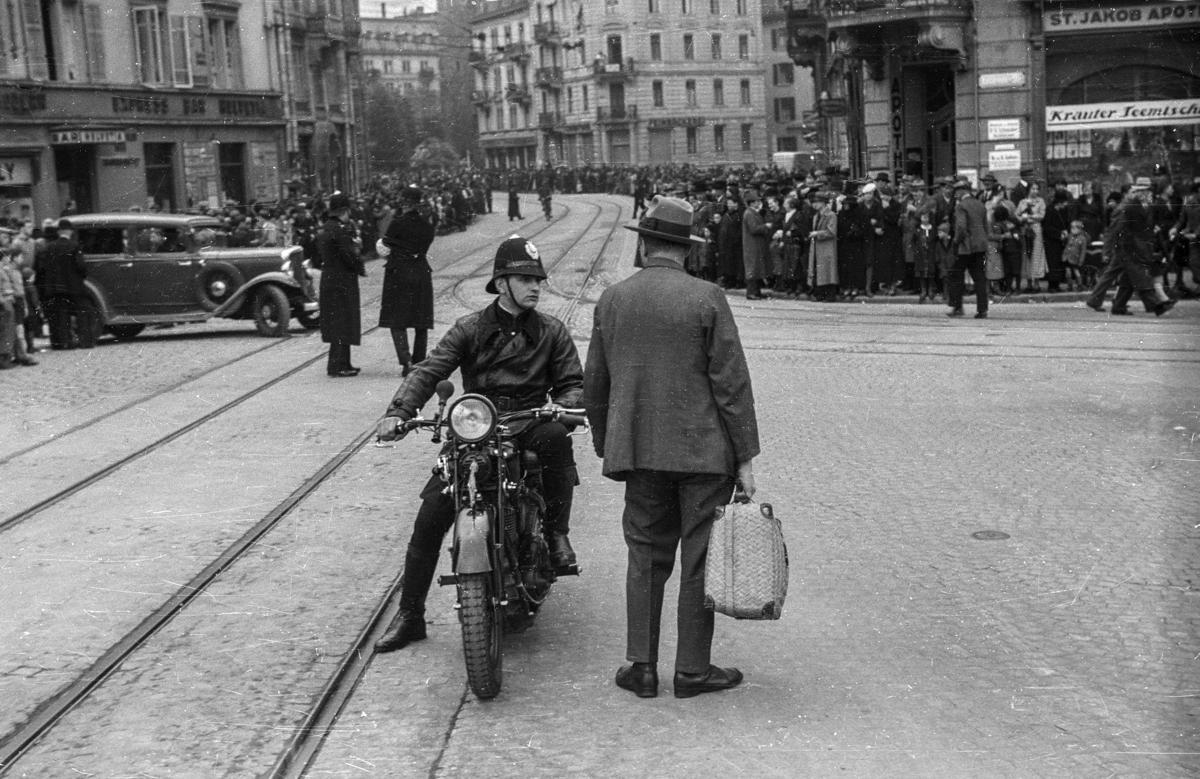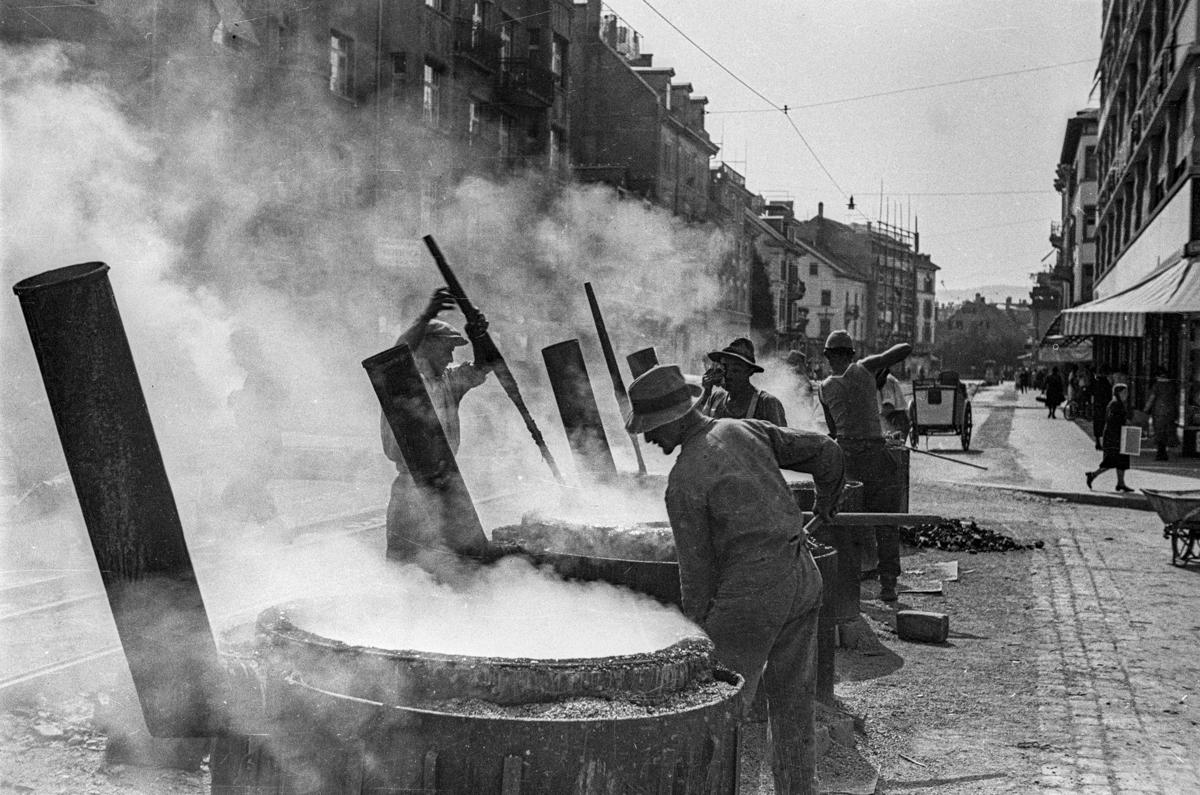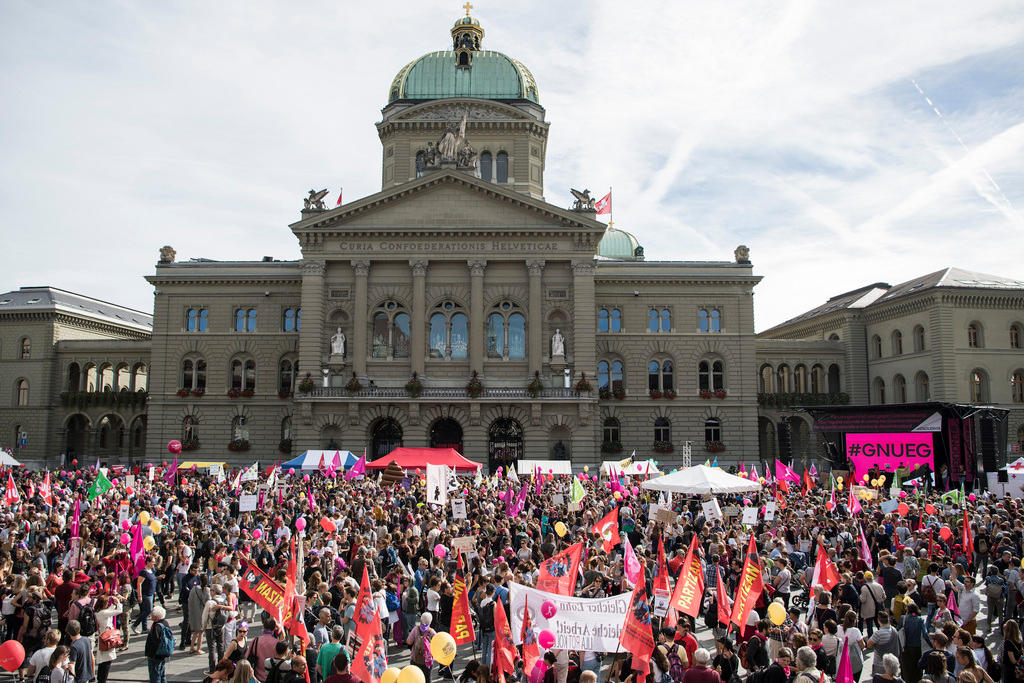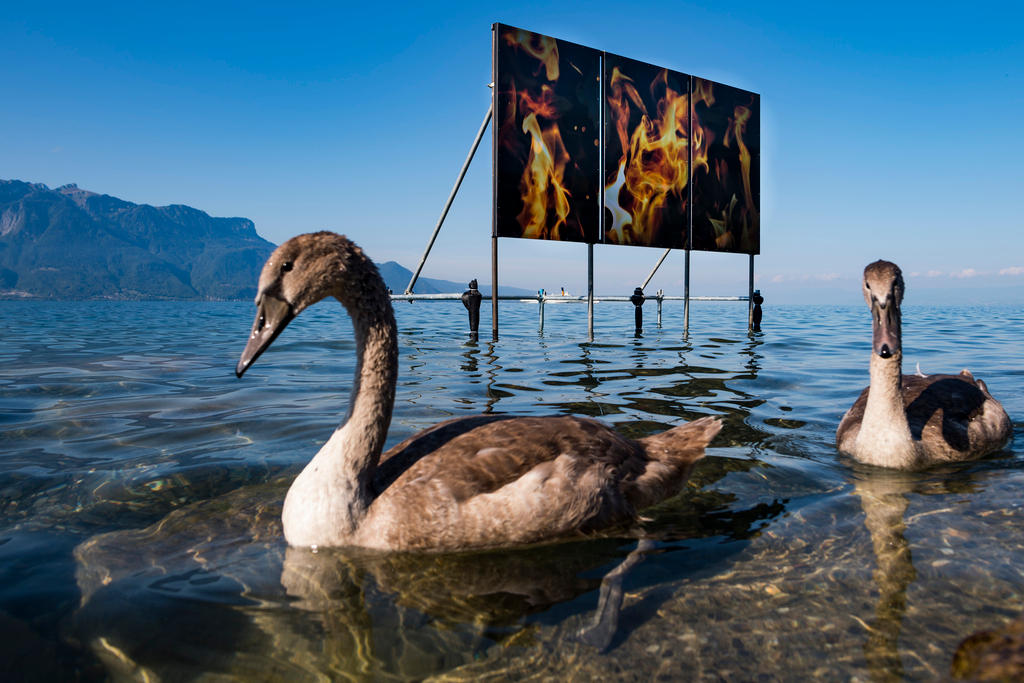Photos of workers were a labour of love
Swiss photographer Emil Acklin documented the social and political history of Zurich between 1930 and 1950. He trained his lens on people on the job, and the fruits of his labour are now on display in Zurich.
Armed with a Leica camera, teacher, communist and photographer Emil Acklin (1889-1976) captured the everyday life of people in Zurich’s Aussersihl neighbourhood. He photographed Zurich residents at work on weekdays as well as during their leisure time or at political events, such as the May 1 “International Workers’ Day” parade.
Acklin presents his photography as a reflection of the class struggle that prevailed at the time.
Stormy times
Industrialisation, education of the working class and economic hardship during the war years had a strong influence on Acklin. As a result, his early work became increasingly socialist in nature. In 1917, he joined a revolutionary group and actively participated in its numerous protests against war and militarism. During the November riots of 1917, Acklin was arrested and sentenced to seven months in prison.
After Acklin left prison, he lost his job as a teacher and had to rebuild his life completely. He decided to focus on portraits of workers. In 1929, he founded the Zurich Workers’ Photography Association – with the aim of using photography as a propaganda tool in the class struggle. Most of the photos he left behind were taken during the following decade. These now belong to Zurich’s city archive.
From Thursday until January 18, 2019, an exhibition is showcasing Acklin’s photographic legacyExternal link.
As part of our #swisshistorypics series, we travel back in time with black-and-white pictures of the early days.
(Photos: Zurich City Archive)
Translated from German by Susan Misicka














You can find an overview of ongoing debates with our journalists here . Please join us!
If you want to start a conversation about a topic raised in this article or want to report factual errors, email us at english@swissinfo.ch.